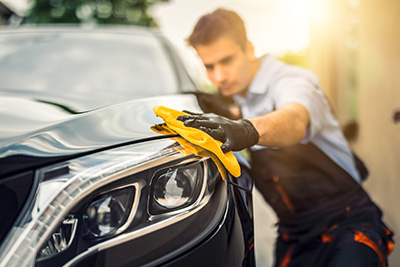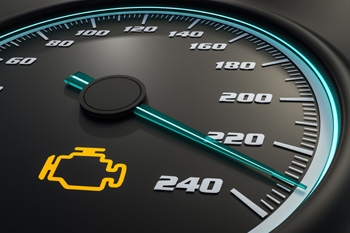
Car detailing – the man holds the microfiber in hand and polishes the car. Selective focus.
Car detailing is more than just washing and waxing; it’s a meticulous process that aims to restore a vehicle’s beauty and protect its surfaces. Achieving a professional finish requires attention to detail, the right tools, and a methodical approach. In this blog, we’ll explore essential car detailing tips to help you transform your vehicle into a showroom-worthy masterpiece.
1. Start with a Thorough Wash:
Begin your detailing journey with a high-quality car wash. Use a pH-balanced car shampoo and a soft microfiber wash mitt to gently remove dirt and grime. Pay extra attention to areas like wheel wells, door jambs, and undercarriage. Rinse thoroughly to ensure no soap residue is left behind.
2. Invest in Quality Products:
Professional results demand professional-grade products. Choose high-quality car detailing products, including wax, polish, and sealant. Opt for microfiber towels instead of traditional cloths to prevent scratching and ensure a smooth finish.
3. Clay Bar Magic:
Before polishing and waxing, consider using a clay bar to remove contaminants from the paint surface. This step helps create a smooth canvas for polishing and enhances the effectiveness of subsequent detailing products.
4. Polish for Perfection:
Polishing is the key to achieving that glossy, mirror-like finish. Use a dual-action polisher for even application and to avoid swirl marks. Select a polish that suits your car’s paint type, and work in small sections for optimal results.
5. Mind the Details:
Pay attention to the often-overlooked details. Q-tips or small brushes can be handy for cleaning intricate areas like air vents, buttons, and seams. A toothbrush works wonders for cleaning around badges and emblems.
6. Protect with Quality Wax:
Waxing not only adds a brilliant shine but also provides a protective layer against environmental elements. Choose a high-quality carnauba wax or synthetic sealant and apply it evenly using an applicator pad. Buff the surface to a brilliant shine once the wax has dried.
7. Interior Excellence:
A truly professional finish includes a spotless interior. Vacuum thoroughly, clean and condition leather surfaces, and use appropriate cleaners for dashboards and consoles. Pay special attention to windows, ensuring a streak-free finish.
8. Tire and Wheel Elegance:
Don’t forget about your wheels and tires. Use a dedicated wheel cleaner to remove brake dust, and consider applying a tire dressing for a sleek, shiny finish. This attention to detail enhances the overall appearance of your vehicle.
9. Consistency is Key:
Regular detailing is the secret to maintaining a professional finish. Develop a routine that includes both interior and exterior care to preserve the appearance and value of your vehicle over time.
10. Final Touches:
Step back and admire your work. Check for any spots you might have missed and make any necessary touch-ups. A discerning eye during the final inspection ensures a truly professional finish.
Conclusion:
Car detailing is a labor of love that pays off in the form of a stunning, professional finish. By following these tips and investing the time and effort needed, you can transform your car into a work of automotive art. Remember, the key to a lasting shine is regular maintenance and attention to detail. Happy detailing!
Lim’s Auto Body is a full service auto body and mechanical repair shop locally owned and operated in Largo, Florida. For more information, go to our web site www.limsautobody.com or call (727) 422-3232.

 Your car’s dashboard is like a control center, providing crucial information about the health and performance of your vehicle. One of the most important features on the dashboard is the array of warning lights, each designed to alert you to potential issues that need attention. In this guide, we’ll delve into the world of dashboard warning lights, helping you understand what they mean and what actions you should take when they illuminate.
Your car’s dashboard is like a control center, providing crucial information about the health and performance of your vehicle. One of the most important features on the dashboard is the array of warning lights, each designed to alert you to potential issues that need attention. In this guide, we’ll delve into the world of dashboard warning lights, helping you understand what they mean and what actions you should take when they illuminate.